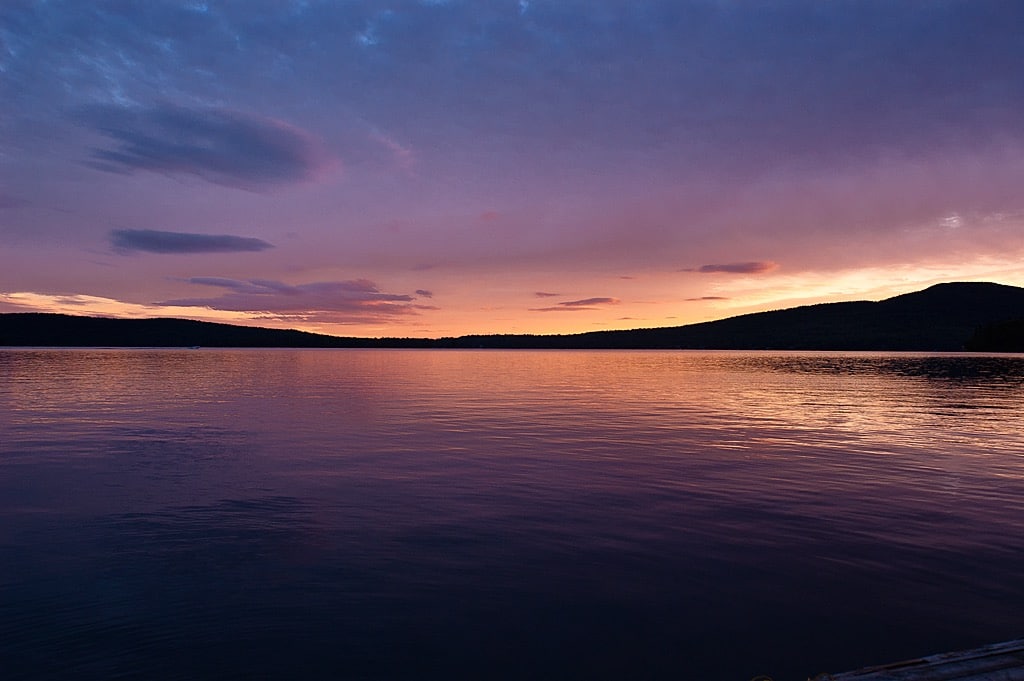The naturalist and writer Henry David Thoreau explored the Maine woods three times between 1846 and 1857. Strictly speaking, he visited the North Woods where his adventures included canoeing Moosehead Lake, Maine’s largest, and climbing 5,268-foot-high Mt. Katahdin, the state’s highest peak and the centerpiece of Baxter State Park. Thoreau’s wanderings, detailed in his book, The Maine Woods, came in the wake of scores of well-heeled 19th century “sports” from New York City and Boston who also headed to the North Woods to fish, canoe and “rusticate” in Maine’s great outdoors.
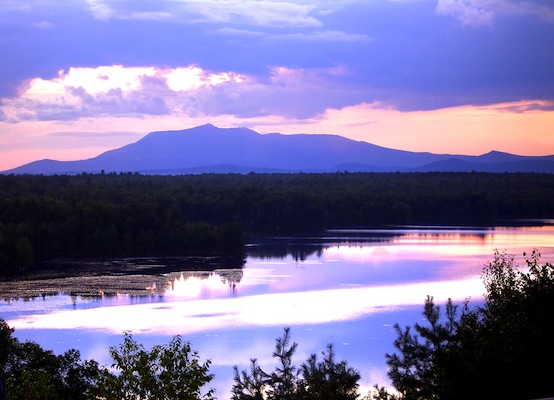
Had he lived a few years longer, Thoreau probably would have been captivated as well by The Rangeley Lakes Region, 125 miles northwest of Portland in Maine’s Western Lakes and Mountains. With 112 lakes and ponds, including six major lakes—Rangeley, Mooselookmeguntic, Cupsuptic, the Upper and Lower Richardsons, and Aziscohos—thousands upon thousands of forested acres and the state’s highest concentration of 4,000-foot-high peaks, The Rangeley Lakes Region is prime wilderness. It’s a four season resort for vacationers who love to canoe, kayak, and fish in the warmer months and in winter, snowmobile, snowshoe, and ski down 4,121-foot-high Saddleback Mountain, one of the Northeast’s biggest.
It was fly fishing that put Rangeley on the maps of savvy sportsmen as early as the 1850s. But it wasn’t until roughly ten years later, when reports of brook trout weighing close to 12 pounds filtered down to New York and Boston, that the region attracted widespread attention. Once it was verified that the hefty piscines were indeed brook trout—and not lake trout or something else—Rangeley welcomed a stampede of sportsmen, armed with fly rods and local guides.
Chief among the guides was Cornelia Thurza Crosby, better known as “Fly Rod Crosby”. Seeking healthy mountain air, Crosby quit her bank job and headed 22 miles from her hometown of Phillips to Rangeley Village. Given a bamboo fly rod, she took to the sport like a fish to water. Soon the fly fisher, who stood six feet in her stockings and reportedly could catch as many as 200 fish a day, had a syndicated column, “Fly Rod’s Note Book,” in The Boston Globe, Chicago Sun-Times, and The New York Times. In 1879, Fly Rod became the first Registered Maine Guide, an incredible feat for a woman of her time.
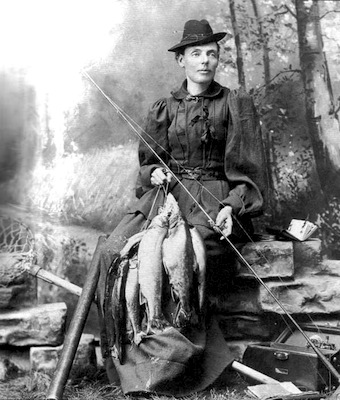
By the 1890’s, Fly Rod was employed by the Maine Central Railroad, eager to attract vacationers to its new rail routes into the region. At appearances in New York and other cities, Fly Rod wore a green doeskin outfit, posed with a log cabin and deftly cast into a tank filled with trout and salmon. “I would rather fish one day than go to heaven,” declared the intrepid angler, who died in 1946 at age 92, but not before putting The Rangeley Lakes Region firmly on the tourist map.
Serious fly fishers are still drawn to these lakes even if today’s big brookies weigh in at 5-6 pounds. After “ice-out,” when the frozen lakes have thawed, anglers arrive in late May and June to see the trout and salmon rise, then again in September. During those precious weeks, they hole up at historic sporting camps like Grant’s Kennebago Camps. October draws bird hunters for grouse and woodcock, and late fall brings deer, moose and bear hunters.
In July and August, at the height of summer, Rangeley Village, the region’s largest town, swells from 1,500 full-time residents to 10,000 vacationers. The region becomes a laid back playground for families and friends, who drive 2 1⁄2 hours from Portland or Bangor, 4 hours from Boston and 7 1⁄2 hours from New York. The well-heeled usually fly in, landing at Steven A. Bean Municipal Airport, two miles northwest of Rangeley Village, or splashing down at the Rangeley Lake Seaplane Base, courtesy of Acadia Sea Planes.
These modern-day “sports” canoe, kayak and motor along the region’s sparkling lakes, and swim, sunbathe, and waterski. Occasionally, they throw in a line, dressed with a lowly worm or garish lure, to hook yellow perch, or catfish, which Mainers call “hornpouts.” Some tee off amid splendid mountain views at the historic 18-hole Mingo Springs Golf Course on Rangeley Lake’s northern side. Others make the easy 1.75-mile hike up to the new 30-foot-high panoramic viewing tower at Bald Mountain, dominating the thumb-like peninsula between Rangeley Lake and mighty Mooselookmeguntic, the region’s largest at more than 16,000 acres. More ambitious types hike lofty Saddleback Mountain, part of the 275-mile Maine section of the Appalachian Trail.
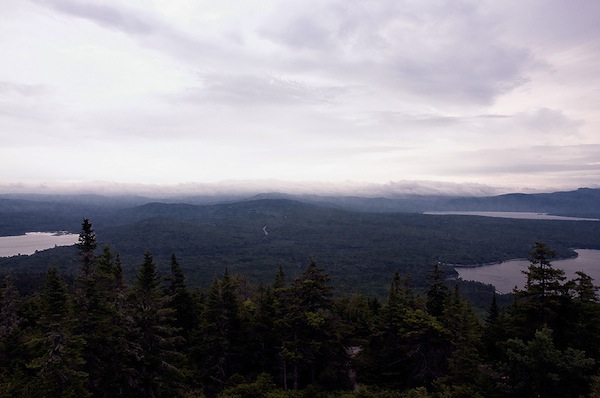
Later, vacationers resort to rustic lodges and bed-and-breakfast inns, many in Rangeley Village. There’s the historic Rangeley Inn on Main Street, a sky-blue wood-frame manse with white trim and a long veranda where guests can enjoy drinks before dinner. Or Loon Lake Lodge, built in 1909 as a family vacation retreat, or “camp,” on the lake’s eastern shore. Another popular choice is the five-room Pleasant Street Inn B&B. Those who like golf, as well as commanding views, choose the Country Club Inn, atop a 2,000-foot-high promontory. Built in the 1920s as a private lodge, the inn offers discount coupons to the adjacent 18-hole Mingo Springs Golf Course.
For more rusticity, head to the sporting camps—Grant’s Kennebago Camps north of Rangeley Lake, Bosebuck Mountain Camps on Aziscohos Lake, and Bald Mountain Camps in tiny Oquossoc Village, seven miles west of Rangeley Village.
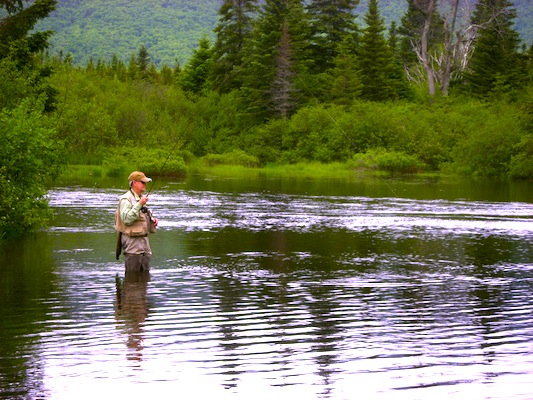
Campers who appreciate creature comforts should choose Rangeley Lake State Park with 50 well- spaced sites, facilities with hot showers, and a beach and playground on the lake’s southern shore. For a more woodsy experience, head to the Stephen Phillips Memorial Preserve, as I did, for secluded waterfront sites along Mooselookmeguntic Lake with well-maintained facilities and stone fire pits. There’s good camping, too, at Cupsuptic Lake Park and Campground, with sites for both tents and RVs, island sites, and wilderness sites, some a seven-mile hike from the main campground. “Glampers” can book cabin tents with cots and camp stoves. Furthest west, at the southeast end of Aziscohos Lake, Black Brook Cove Camp has RV and tent sites, remote waterfront sites, and sites on Beaver Island reachable only by boat. Here one can literally get lost in the wilderness.
In Rangeley Village, with hotels, eateries, and shops along its main street, stop for coffee, pastries, breakfast, and light fare at Moosely Bagels, the Inner Eye Coffee Shop & Bakery, Keep’s Corner Café & Bakery, or Parkside and Main. Moose Alley serves up salads, wraps and flatbread pizza, along with bowling, billiards and 22 HD-TV screens for spectator sports. Join the throng outside the Pine Tree Frosty, a fixture since 1964, for hot dogs, burgers, and lobster rolls, as well as ice cream cones and sundaes, soft serve or hard scoop from Gifford’s of Maine.
Across the street, The Rangeley Lakes Region Historical Society has interesting exhibits documenting the town’s beginnings, including its logging heritage. But the Historical Society’s best exhibits are in Oquossoc. At the high-tech Rangeley Outdoor Sporting Heritage Museum, a 3,500-square-foot rustic log building opened in 2010, you can actually hear the voices of famous Rangeley sportspeople like Fly Rod Crosby and Carrie Stevens, another woman who helped promote the sport. In the 1920s and ‘30s, Stevens, the pretty wife of a Registered Maine guide and a milliner by trade, created over 150 fly patterns, many still used. But she’s best known for creating the Gray Ghost, revered by fly fishers from Maine to the Rockies and from Patagonia to the British Isles.
Along with rods, reels, and other paraphernalia, you’ll see curiosities like the scary looking wood carving of the mythical White Nose Pete, a behemoth brook trout that repeatedly eluded frustrated anglers. The real thing is on display, too: an 11 lb., 2 oz. brook trout, one of the largest ever caught in the Upper Dam between Mooselookmeguntic Lake and the Richardson Lakes, mounted in 1897.
At The Gingerbread Restaurant, diners enjoy sumptuous breakfasts, lunches and dinners inside, or outside on the wraparound porch. At Bald Mountain Camps, where Teddy Roosevelt once stayed, the well-regarded dining room is also open to the public.
Don’t expect a slew of tourist traps in Oquossoc. This woodsy area boasts nothing but the great outdoors as its attractions. But, between boating on the lake and hiking through the forest, Oquossoc’s nature scene is more than enough to keep you busy. The charming little village offers first-rate hospitality at its small restaurants and cabins.
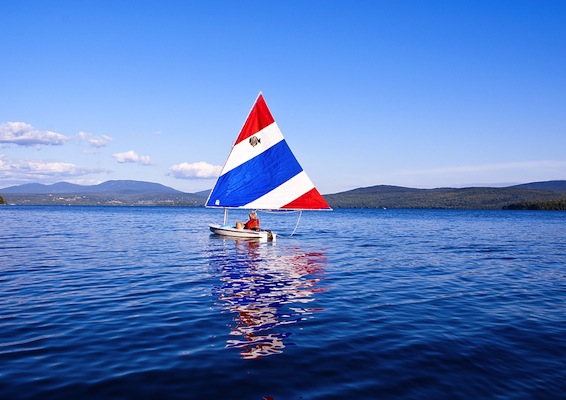
Along with Roosevelt and President Herbert Hoover, and more recently, actors Kurt Russell and Patrick Dempsey, the Rangeley Lakes region has drawn legions of writers and poets, musicians and artists—and even a few deep thinkers like Dr. Wilhelm Reich. On the outskirts of Rangeley Village one can discover the curious case of Dr. Reich, a brilliant Austrian psychiatrist, at the Wilhelm Reich Museum situated on a spectacular 175-acre site laced with wooded trails. In 1940, while staying at a cabin on Mooselookmeguntic Lake, Reich became convinced that the region’s clean air and low humidity promoted orgone, an electrical life force. Two years later, he purchased an old farm and set up a research center there. Today, inside what was formerly called Orgonon, is the Orgone Energy Observatory, an ultramodern multilevel stone cube containing many of Reich’s scientific instruments and inventions. Among them is the Orgone Energy Accumulator, an early device used to treat cancer. The museum also contains his library, office, and art studio, which is steps from a large terrace with breathtaking views of the Rangeley Lakes. The small bookstore on site sells intriguing titles by this alternative soul, including The Einstein Affair, with correspondence between him and Albert Einstein, whom he met on two occasions. Along with periodicals, audiotapes, and videos are photographs of Reich and small reproductions of his paintings. It’s a fascinating glimpse into another of the 20th century’s non-conformists. Strolling through the lakeside property, listening to birdsong echoing in the trees and squirrels scampering among the branches, you might perhaps channel his deep appreciation for nature here in the great outdoors, and preserved in his colorful paintings.
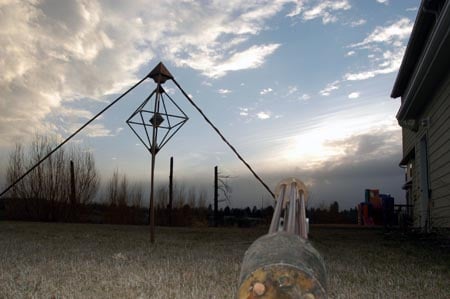
These and other contemplations might arrive when you’re relaxing on the porch of your inn or cabin on a summer’s eve, taking in the night air; or stretched out in your tent, savoring the sweet scent of the piney woods, the hoot of an owl, the whistle of a loon and the sound of gentle waves lapping against the lakeshore. Mindful meanderings, they may come after a long day of canoeing, kayaking, hiking and casting lines while you “rusticate” in the Rangeley Lakes Region, one of America’s most welcoming resorts and one of our last wild places.
The area code for Maine is 207.
Where to Stay:
Country Club Inn – A sprawling white hilltop house catering to only 40 guests, the inn offers discount coupons to the adjacent 18-hole Mingo Springs Golf Course www.mingosprings.com; 56 Country Club Road, Rangeley, 207-864-3821 www.countryclubinnrangeley.com
Grant’s Kennebago Camps – Nine miles down a dirt road, between Lake Kennebago and the Kennebago River, this century-old fly-fishing camp offers 18 waterfront cabins, private docks with boats and motors, and a main lodge serving three meals a day, including lobster, prime rib and, sometimes, the guests’ catch. P.O. Box 786, Rangeley, ME 04970, 800-633-4815.www.grantscamps.com
Loon Lodge Inn & Restaurant – Built in 1909 as a family camp on Rangeley Lake’s eastern shore, it has a private beach, nine rooms (including two family suites) with country quilts, a Great Room with a fieldstone fireplace, and a lively pub. 16 Pickford Rd., Rangeley, ME 04970, 207-864- LOON (5666). www.loonlodgeme.com
Pleasant Street Inn B&B – Offering five country cozy rooms, a full breakfast and afternoon tea in a sprawling red farmhouse. 104 Pleasant St., Rangeley, ME 04970, 207-864-5916. www.pleasantstreetinnbb.com
Rangeley Inn & Tavern – Featuring updated traditional rooms with floral wallpaper, plush wing chairs, and modern amenities like cable TV and free Wi-Fi. Steps away, the inn’s Haley Pond Lodge boasts water views. The rustically elegant Tavern serves New American classics like pan-fried trout with dill foam and espresso grilled pork chops with sautéed fiddleheads and summer risotto. 2443 Main St., Rangeley, ME 04970, 207-864-3341.www.therangeleyinn.com
Where to Eat:
Forks In The Air Mountain Bistro – Serving stylish seasonal dishes in a casual setting. Try the pan- roasted mussels in Allagash white beer or entrees like a panko crusted baked Atlantic haddock and house made gnocchi with pumpkin Alfredo sauce. 2485 Main St., Rangeley, ME 04970, 207-864-2883. www.forksintheair.com
The 45th Parallel – A new barbecue restaurant at the newly renovated Rangeley Saddleback Inn (www.rangeleysaddlebackinn.com ), six miles from Saddleback Mountain. 2303 Main St., Rangeley, ME 04970, 207-864-3434. www.45thparallelbbq.com
The Gingerbread House – Enjoy breakfast, lunch, and dinner—from eggs Benedict and crab cakes to sushi and sashimi—in this large brown house or outside on the wraparound porch. Rtes. 4 & 17, Oquossoc, ME 04964, 207-864-3602. www.thegingerbreadhouserestaurant.net
What to See:
Orgonon – At this national historic site, see the inventions of “mad scientist” Dr. Wilhelm Reich, then stroll the wooded trails. Or rent a cabin with access to Dodge Pond: 3 bedroom Tamarack which sleeps 8, or 2 bedroom Bunchberry which sleeps 4. Dodge Pond Rd., Rangeley, ME 04970. www.wilhelmreichtrust.org
Rangeley Outdoor Sporting Heritage Museum – In this 3,500-square-foot rustic log building with high- tech exhibits, hear the voices of some of Rangeley’s most notable outdoorsmen, including Fly Rod Crosby, the first Registered Maine Guide. Rte. 17, Oquossoc, ME 04964, 207-864-3091. www.rangeleyoutdoormuseum.org
Rangeley Lakes Region Logging Museum – Site of the annual Logging Festival Weekend on the last weekend in July, the museum has hundreds of saws and artifacts, plus a collection of traditional art by West Maine lumbermen, including 19 oils by Alden Grant, grandson of the founder of Grant’s Kennebago Camps. 221 Stratton Rd., Rangeley, ME 04970, 207-864-3939 or 207-864-5368. www.wrlrlm.org
Where to Find Out More:
Maine Office of Tourism – 888-624-6345; www.visitmaine.com
Rangeley Lakes Chamber of Commerce – 800-MT-LAKES (864-5366); www.rangeleymaine.com

